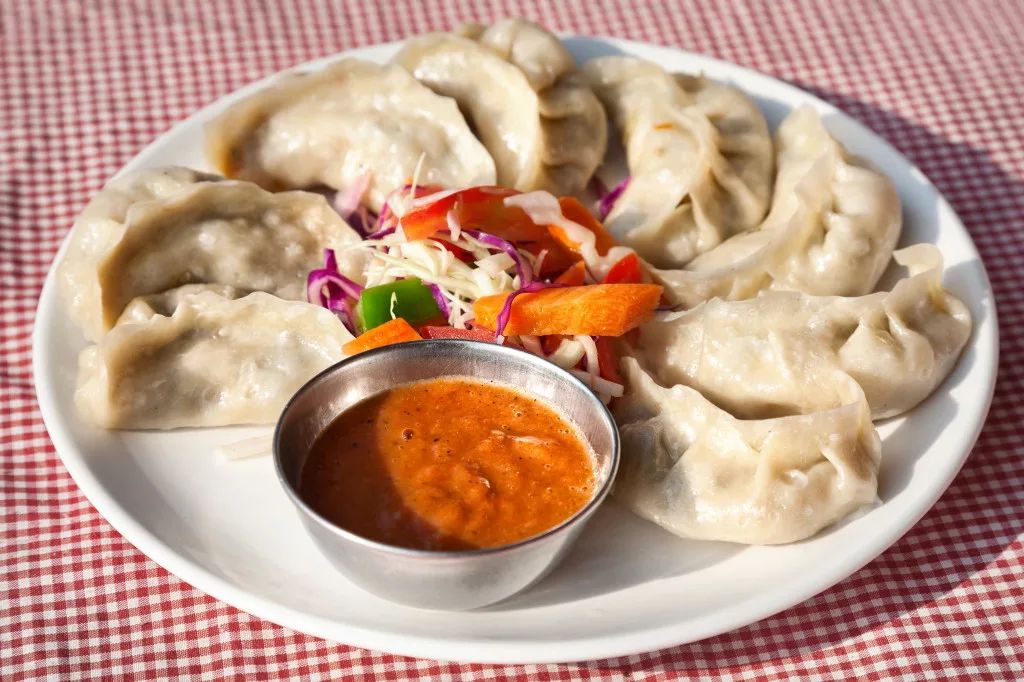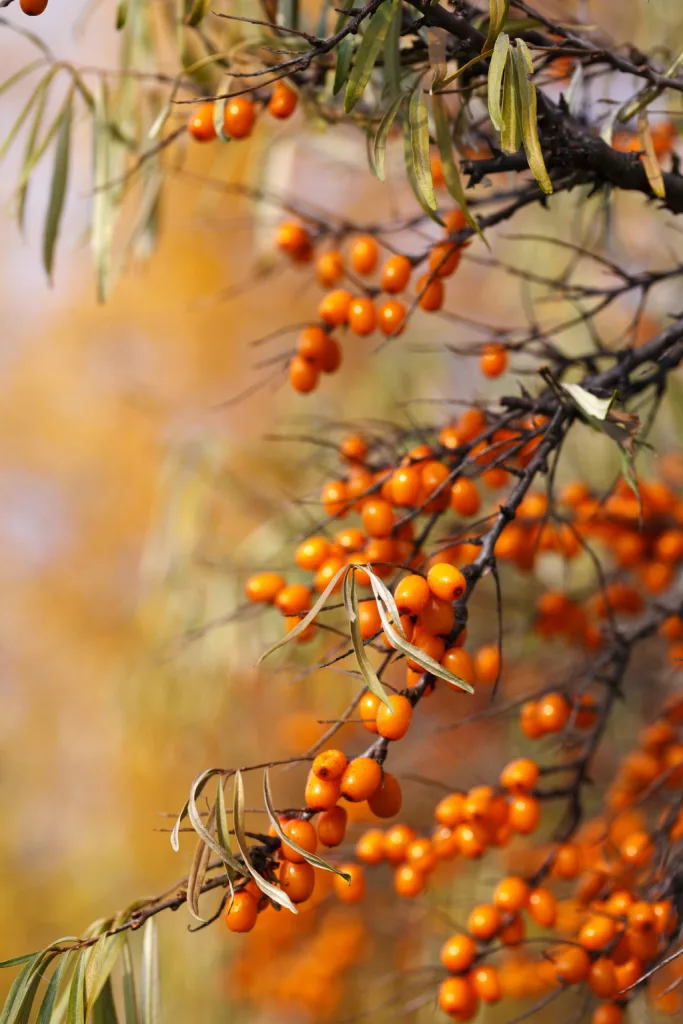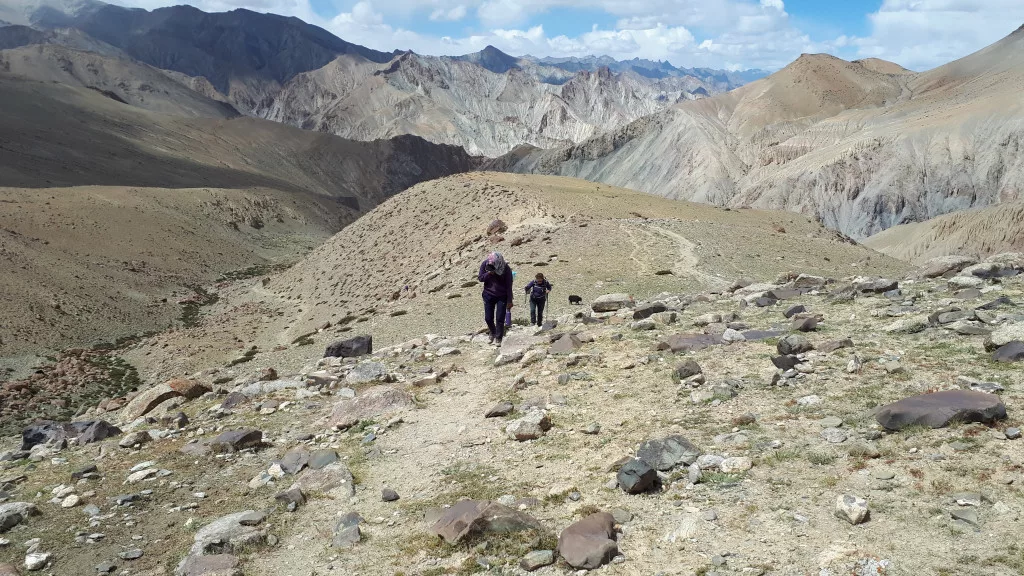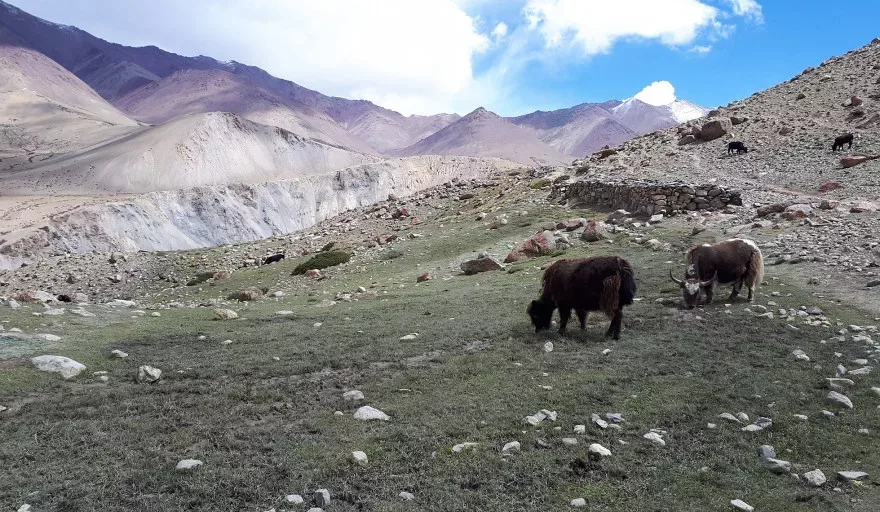In this edition of The Tiffin Box, we embark on a challenging trek through Ladakh, a remote desert region in North India.
In front of us were the jagged, rust-red peaks that characterise Ladakh, a remote, high-altitude desert region in North India. My mum and I were hiking the Markha Valley Trek, which follows the Markha River before winding up the mountains to Gongmaru La, a pass with an elevation of 5,260 metres. The entire trek was taking place at ‘very high altitude’ (between 13,000-18,000 feet): at this elevation air pressure decreases, making it harder to take oxygen into your lungs. We’d delayed the trek by a day as my mum had developed symptoms of altitude sickness shortly after arrival: nausea, dizziness, and headaches. This extreme exercise in mother-daughter bonding was completely my idea.
Our guide was Deachan, a slight-soft spoken woman doing a degree in rural development, and our porter was a woman named Angmo, who was taking the job to help improve her English. Both worked for the Ladakhi Women’s Travel Company, the only trek organisation staffed exclusively by women in the region.
The first day was slow-going, as my mum was still feeling dizzy and breathless. We walked past rocky slopes striped green, orange and purple, barely a person in sight. It was hard to believe that this remote region had once been an important stopping off point on the Silk Road, attracting traders from Tibet, China and the Middle East. But the Tibetan influence was apparent in the region’s Buddhist faith, and it also had a profound influence on the food culture, which we experienced first-hand.
At the end of the first day’s trek, we arrived at our homestay; a mud-brick house where water came from a hand-pump, electricity was provided by solar panels and there was a long-drop toilet. We sat on cushions around low tables in the main room, drinking sweet tea from metal flasks. Then came the task of cooking dinner. I watched as Angmo made a dough from flour and water, and Deachan grated vegetables from the garden. She cooked them in a pan with salt, pepper and cheese.
“What are you making?” I asked.
“Mok moks. The Tibetan name for them is momos.”
I watched as Angmo rolled out thin rounds of dough. She picked up a round, placed a spoonful of dough in the middle of it, then twisted the dough and pinched it shut.
Naturally, I wanted a go. And of course, it was far more difficult than it looked. My mok moks were crude and childish in comparison to Deachan and Angmo’s, even though they both showed me their way of pinching it shut several times. Everyone, apparently, had their own unique way of doing it. Mine seemed to involve the dough tearing and the filling poking out. But I got there in the end and put my clumsy offerings inside the steamer with the other mok moks. They were placed on a simple woodstove to cook. Smoke from the fire and steam from the pan billowed out into the dim-lit room.
We ate the mok moks with a dipping sauce Deachan had made from grated tomatoes, garlic and chili. Despite, or perhaps because of the few ingredients used, they were delicious – the filling moist, rich and peppery, complimented by the sharpness of the sauce. Yet despite their simplicity, I knew they wouldn’t taste nearly as good if I tried to recreate them at home.

The next day, we spent the first couple of hours tracing the path of the river. On either side of the banks was a flourish of vegetation. Terraced fields of alfalfa and barley. Apricot, apple and walnut trees.
“We dry the apricots and make a juice from them,” Deachan said. “And we also make baril out of ground up apricot stones and walnuts. You eat it with bread.”
The Silk Road trade in Ladakh slowly dwindled as countries began to close and reinforce their borders. The region suffered centuries of isolation and were forced to use only locally sourced ingredients. This included cheese and milk from hardy livestock such as yaks, and vegetables such as potatoes, beans, radishes, spinach and carrots. Temperatures in Ladakh drop to -30˚C in winter, making for a short growing season. For this reason, Ladakhis had to substitute their diets by foraging and preserving food.
As we crossed the glacial river on a rickety wooden bridge, Deachan pointed out some thorny plants with bright orange berries.
“That’s sea buckthorn. We make it into a juice and also a syrup for the winter. It has a lot of vitamin C in.”
We stopped to try the berries. They were so tart they made me suck in my cheeks, but they were curiously addictive.

A little later, I was surprised to see some plants I recognised.
“Wild garlic?” I asked.
Deachan confirmed it.
“Yes, we use it to flavour dishes. And there are stinging nettles, which we use to make soup,” she said, pointing out a cluster clinging to Ladakh’s bare, rocky slopes. Another plant she pointed out was a wild caper bush – Ladakhis pluck the shoots and make them into a relish.
Not everyone in Ladakh is interested in maintaining this traditional way of life. Since opening up to tourists in the 1970s, a crop of international restaurants have sprung up in the regional capital of Leh, and shops selling convenience foods. Nowadays, the traditional tea tents dotted along the trekking route are more likely to offer Maggi instant noodles than fresh apricot juice. The regional government is worried about people losing sight of their traditional way of life, but in villages with no running water or electricity, it’s unsurprising that quick-fix dishes like Maggi are popular. As someone who treats herself to a takeaway once a fortnight, I’m not judging.
Over the next few days, we continued trekking, passing surreal mushroom-shaped pinnacles and primeval folds of rock as we ascended into the mountains. Once we were above the treeline the vegetation was sparse, consisting of little more than a couple of shrubs and the orange lichen that clung to the boulders. By now, we were three days’ walk from the nearest road. We rarely encountered other trekkers. Instead we saw eagles circling on thermals above us, and rodents known as pikas scurrying over the arid land. Small herds of shaggy yaks ranged the rocky hillsides, seeking out clumps of vegetation.
On our penultimate night, we camped on a plain at an altitude of 4,841 metres, encircled by snow-capped mountains. As soon as the sun sank behind them, the temperature plummeted. We were in bed by 5.30pm, shivering despite our down jackets and thermals, sleeping bags and thick fleece blankets. That night, I dreamed of a bowl of rich, creamy butter chicken. In the morning the inside of the tent was covered in frosted condensation and our water bottles were frozen solid. I felt a renewed sense of admiration for the people of Ladakh, and how they’d managed to subsist in such a remote, inhospitable region.






















